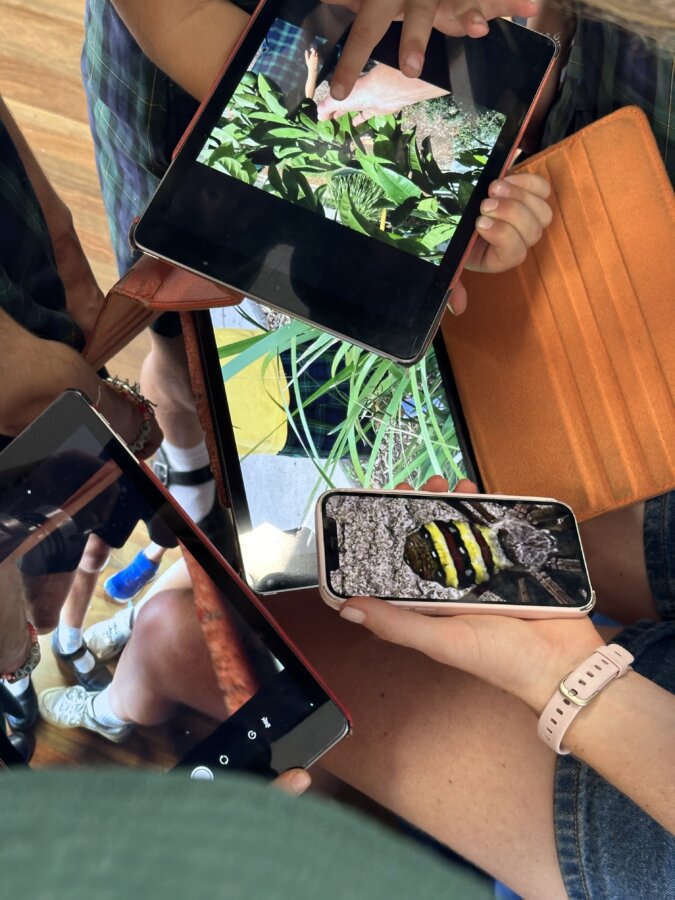The discovery of a Praying Mantis species in southern Thailand, a new wasp species discovered by high-school students in Beerwah, Queensland, and a study of the evolution of Luna moths in relation to predation and other environmental constraints.
These are a few of the discoveries and new research generated by community members and data on iNaturalist (Natarajan 2025), and in June of 2025, iNaturalist celebrated 250 million verifiable observations on its platform.
But what's the big deal about that?
Citizen science refers to the practice of – usually voluntary – public participation and collaboration in scientific research to increase scientific knowledge (Ullrich 2024). Public participation and collaboration with scientists and researchers is typically performed through data collection and monitoring, with the public generating observations and ideas for researchers to utilise in their projects at a relatively low cost (Ullrich 2024).
Among many other platforms such as Zooniverse, eBird and Fieldscope, iNaturalist is an online “organism occurrence recording tool” and “crowdsourced species identification system” (Seltzer 2024), which allows users to record their own observations (i.e. uploading a photo of a butterfly in your local area), have those organisms identified (with the help of community members and image recognition technology), and have their observations stored as research-quality data for scientist and users to access. iNaturalist is publicly accessible, non-organism-specific, and free to use for individuals who are at least 13-years-old, or who have parental permission.
This has allowed a community of over four million global users to flourish, pool and examine data and contribute to over 6,500 scientific publications (Natarajan 2025). The large amount of public contributions to citizen science projects and datasets is in no small part due to events such as BioBlitzes.
A BioBlitz is an event that focuses on finding and identifying as many species as possible in a specific area over a short period of time (Boudreau et al. 2023). During National Biodiversity Month in September, PlantingSeeds collaborates with schools and universities in urban areas across Australia to conduct the annual National School Citizen Science BioBlitz. A key component of PlantingSeeds’ B&B Highway initiative, the National School Citizen Science BioBlitz allows for participants – both young and older – to contribute to much-needed urban biodiversity data while developing their own STEM skills.
So this September, join the B&B Bioblitz and get snapping!
Article by Simi Olutayo
Reference List
Boudreau D, McDaniel M, Sprout E and Turgeon A (2023) BioBlitz, National Geographic Society, viewed 2 September 2025, https://education.nationalgeographic.org/resource/bioblitz/
Freepik (n.d.) Kids with magnifying glass full shot, Freepik, viewed 9 September 2025, https://www.freepik.com/free-photo/kids-with-magnifying-glass-full-shot_31495258.htm#fromView=search&page=1&position=5&uuid=0a7b372a-3412-4e34-aaa3-8bba5a25e786&query=citizen+science+environment
Natarajan A (2025) ‘We’ve reached 250 million verifiable observations!’, iNaturalist Blog, 31 May, viewed 2 September 2025, https://www.inaturalist.org/posts/113107-we-ve-reached-250-million-verifiable-observations
PlantingSeeds (2023) Citizen Science, PlantingSeeds, viewed 2 September 2025, https://www.ps.org.au/citizen-science
Seltzer C (2024) About, iNaturalist, viewed 2 September 2025, https://www.inaturalist.org/pages/about
Ullrich C (2024) ‘Citizen Science’, National Geographic, National Geographic Society, viewed 2 September 2025, https://education.nationalgeographic.org/resource/citizen-science-article/

